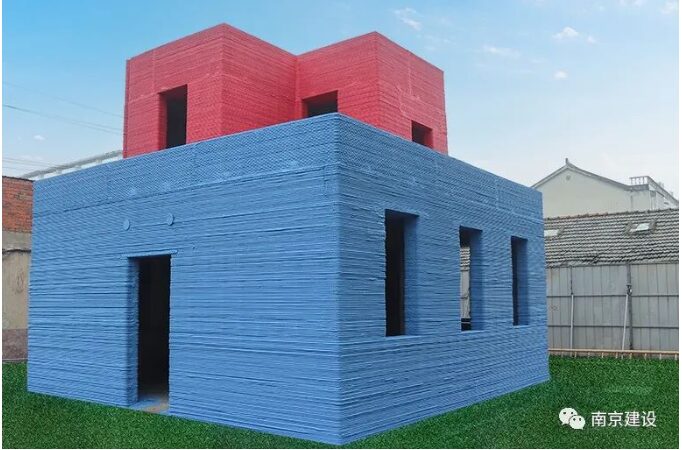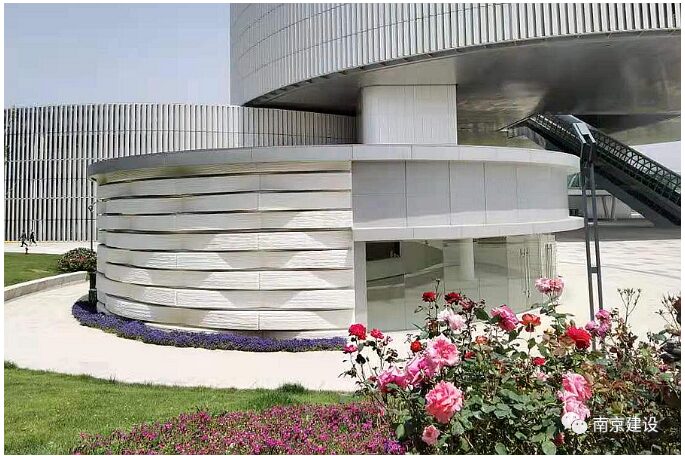Smart construction is evolving rapidly, and the construction industry is no exception. As the construction industry increasingly focuses on sustainability, 3D printed architecture is gradually emerging as a new construction method. So, what is 3D printed architecture? What are its characteristics and advantages?

3D printed architecture is created by computer-designed three-dimensional building blueprints, sent to a digital large-scale construction 3D printer on-site or in a factory via a BIM management system network, and printed layer by layer using a nozzle mounted on a gantry system, robotic arm, or crane to produce finished buildings.

Characteristics and Advantages
3D printed architecture’s unique construction process and innovative techniques provide it with irreplaceable advantages in the construction field:

Fast and Efficient Construction Method
Compared to traditional construction methods, 3D printing eliminates cumbersome processes such as formwork, reinforcement, pouring, and dismantling, significantly shortening project timelines. The construction speed is more than 10 times faster than traditional methods. This efficient construction process helps construction companies better meet tight deadlines and provides effective solutions to alleviate housing shortages.
Reduced Construction Costs and Material Waste
3D printed architecture uses recyclable materials, lowering construction costs, reducing material waste, and improving resource utilization. By enhancing construction efficiency, building quality, and reducing waste, it effectively lowers labor and operational costs.
High Flexibility and Creativity in Design
3D printed architecture can achieve complex designs that are difficult to realize with traditional techniques. Its construction error is minimal, around 5-10mm, and unique components and buildings can be produced by directly modifying the 3D printing software, allowing for customization based on client needs.
Reduced Errors and Safety Risks in Manual Operations
During traditional construction processes, workers may face dangers such as working at heights and operating heavy machinery, while the construction process of 3D printed architecture can reduce personnel exposure, thereby enhancing safety during construction.
Enhancement of Sustainability and Environmental Protection
3D printed architecture promotes sustainable building through the use of environmentally friendly materials and precise control of material usage. Its carbon emissions are approximately 39% lower than those of traditional poured construction, making it an important part of achieving carbon neutrality throughout the building’s lifecycle.
As one of the first pilot cities for smart construction in the country, Nanjing’s 3D printed buildings are practical and aesthetically pleasing, becoming a scenic feature of the city. For example, the health service center in Lingyan Community, Xiongzhou Street, Liuhe District, is a “small and exquisite” two-story building with a red and blue exterior, and the layered patterns on its outer walls are the “marks” of 3D printing. It is the first truly livable and deliverable two-story building made entirely through 3D printing in the country.


Figure1 Health Service Center in Lingyan Community, Liuhe District
Another example is the Jiangbei Citizen Center in Nanjing, located on the north bank of the Yangtze River, with a total construction area of 75,000 square meters. The mini round building in its square is the first fully prefabricated building in China made by 3D printing, featuring a simple and elegant design with a unique streamlined shape, becoming the highlight of the entire citizen center.


Figure2 Jiangbei Citizen Center in Nanjing
With its unique advantages and broad application prospects, 3D printed architecture is gradually becoming a star of the future in the construction industry. The center has learned from the Municipal Construction Committee’s Market Department that Nanjing is actively promoting various intelligent construction technologies, including 3D printed architecture, through the improvement of standard systems, implementation of reward policies, and provision of funding support. In the future, 3D printed architecture will drive innovation in the construction industry and create better living spaces for people.

Source: Energy Saving Science
Photo Source: Nanjing Construction
Image Copyright: Nanjing Construction
Editor: Liu Xiaoyue Reviewer: Wu Tingting Released by: Green Building Promotion




















